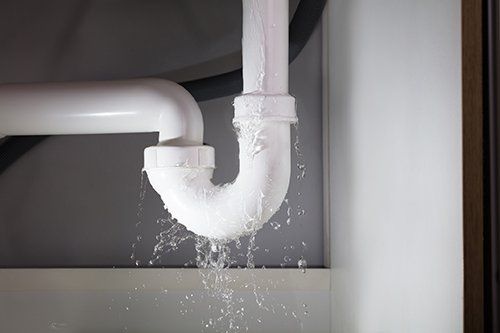We have found this post pertaining to How to detect water leaks in your home listed below on the net and accepted it made perfect sense to relate it with you on this site.

Leaks not only trigger waste of water yet can also trigger unneeded damages to your residence and advertise undesirable natural growth. However, water leakages could go undetected since most of the pipework in our house is concealed. By understanding and looking for everyday situations that cause leakages, you can shield your residence from future leaks and also unnecessary damages. Today, we will take a look at six leak triggers that might be creating your pipelines to leak.
Instantaneous temperature level changes.
Extreme temperature level modifications in our pipes can create them to expand as well as get suddenly. This development as well as contraction might cause fractures in the pipes, particularly if the temperature are below cold.
Corroded water supply
As time passes by, your plumbing system ages as well as deterioration such as rust might begin eating away the pipes. This could be the reason for staining or bending on your water pipes. This requires an evaluation with your plumber immediately. If our plumbing system is old, take into consideration replacing the pipes considering that they go to a greater risk of rust than the more recent versions.
Faulty Pipe Joints
The point at which your pipelines connect is regularly the weakest web link in the waterline. Pipeline joints can wear away over time, resulting in water leakages. However, most of pipe joints are not conveniently visible. If you have loud pipelines that make ticking or banging sounds, particularly when the warm water is activated, your pipeline joints are possibly under a lot of pressure. It is a good idea to have your plumber check your system yearly.
Elbowing in origins
Many water leakages begin outside the house instead than inside it. You may discover damp spots or sinkholes in your yard, and that could indicate that tree roots are invading water lines creating water to leak out.
Poor Water Connectors
Sometimes, a leak can be brought on by loose hoses and also pipes that provide your home appliances. Most of the time, shifting is what creates the loose water Links. You may locate in the case of a cleaning maker, a pipe may spring a leakage due to trembling during the spin cycle. In case of a water links leakage, you may discover water running straight from the supply line or puddles around your home appliances.
Blocked Drains
Obstructed drains could be bothersome and also inconveniencing, but they can sometimes end up creating an overflow leading to rupture pipelines. Keep eliminating any kind of materials that might decrease your drains pipes that might obstruct them to avoid such troubles.
All the above are causes of leaks but not all water leakages result from plumbing leakages; some leaks might originate from roof covering leaks. All leaks should be repaired promptly to stay clear of water damage.
Leaks not only trigger waste of water yet can also trigger unneeded damages to your residence and promote unwanted organic growth. By looking and also recognizing for everyday situations that trigger leaks, you can safeguard your house from future leaks as well as unneeded damages. Today, we will certainly look at 6 leak triggers that might be creating your pipelines to trickle.
At times, a leak can be caused by loose tubes and also pipelines that provide your devices. In instance of a water links leakage, you might notice water running directly from the supply line or pools around your devices.
How To Check For Water Leak In Your Home
How To Check for Leaks
The average household's leaks can account for nearly 10,000 gallons of water wasted every year and ten percent of homes have leaks that waste 90 gallons or more per day. Common types of leaks found in the home are worn toilet flappers, dripping faucets, and other leaking valves. These types of leaks are often easy to fix, requiring only a few tools and hardware that can pay for themselves in water savings. Fixing easily corrected household water leaks can save homeowners about 10 percent on their water bills.
To check for leaks in your home, you first need to determine whether you're wasting water and then identify the source of the leak. Here are some tips for finding leaks:
Take a look at your water usage during a colder month, such as January or February. If a family of four exceeds 12,000 gallons per month, there are serious leaks.
Check your water meter before and after a two-hour period when no water is being used. If the meter changes at all, you probably have a leak.
Identify toilet leaks by placing a drop of food coloring in the toilet tank. If any color shows up in the bowl after 10 minutes, you have a leak. (Be sure to flush immediately after the experiment to avoid staining the tank.)
Examine faucet gaskets and pipe fittings for any water on the outside of the pipe to check for surface leaks.
Undetected water leaks can happen without the home or business owner even realizing. If you suspect a water leak, but not able to find the source. It is time to contact a professional water leak detection service, The Leak Doctor.
How To Find a Water Leak In Your Home
https://www.leakdoctor.com/blog/How-To-Check-For-Water-Leak-In-Your-Home_AE197.html

I came across that content about How to detect water leaks in your home when scouting around the search engines. Loved our post? Please share it. Let another person check it out. Thank you for your time. Kindly come visit our blog back soon.
Start Now